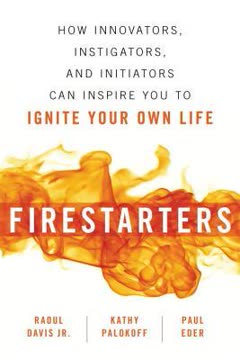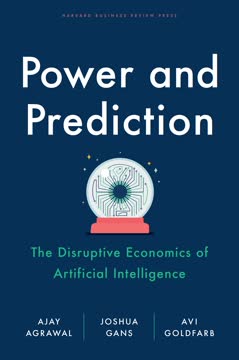Key Takeaways
1. Systems Thinking: Understanding Interdependencies and Feedback Loops
"Today, systems thinking is needed more than ever because we are becoming overwhelmed by complexity."
Systems thinking is the cornerstone of the learning organization. It involves understanding how different parts of an organization interact and influence each other, rather than viewing problems in isolation. This approach helps identify root causes and leverage points for effective change.
Key concepts in systems thinking:
- Feedback loops: Reinforcing (amplifying) and balancing (stabilizing) processes
- Delays: Time lags between actions and consequences
- Mental models: Underlying assumptions that shape our perception of reality
By applying systems thinking, organizations can:
- Anticipate unintended consequences of actions
- Identify high-leverage interventions for lasting change
- Develop more holistic and sustainable solutions to complex problems
2. Personal Mastery: Cultivating Individual Growth and Vision
"People with a high level of personal mastery live in a continual learning mode."
Personal mastery is the discipline of continually clarifying and deepening our personal vision, focusing our energies, developing patience, and seeing reality objectively. It is the foundation for individual growth and learning within an organization.
Components of personal mastery:
- Personal vision: Clearly defining what one wants to achieve
- Creative tension: The gap between vision and current reality
- Commitment to truth: Willingness to challenge assumptions and see reality clearly
Benefits of personal mastery in organizations:
- Increased motivation and engagement
- Enhanced problem-solving and innovation
- Greater resilience in the face of change and challenges
3. Mental Models: Challenging Assumptions and Improving Decision-Making
"Mental models are deeply ingrained assumptions, generalizations, or even pictures or images that influence how we understand the world and how we take action."
Mental models are the internal images, assumptions, and stories we use to understand the world. Recognizing and challenging these models is crucial for improving decision-making and fostering organizational learning.
Techniques for working with mental models:
- Surfacing: Bringing assumptions to light
- Testing: Challenging the validity of assumptions
- Improving: Refining models based on new information and experiences
Benefits of addressing mental models:
- Enhanced communication and collaboration
- Improved problem-solving and decision-making
- Greater adaptability to change
4. Shared Vision: Aligning Organizational Purpose and Individual Aspirations
"A shared vision is not an idea. It is a force in people's hearts, a force of impressive power."
Shared vision is a collective sense of purpose that aligns individual aspirations with organizational goals. It provides focus and energy for learning, fostering commitment rather than compliance.
Steps to create a shared vision:
- Encourage personal visions
- Communicate the organization's vision clearly
- Connect individual and organizational visions
- Foster ongoing dialogue and refinement
Benefits of a strong shared vision:
- Increased motivation and commitment
- Enhanced cooperation and teamwork
- Clearer direction for decision-making and resource allocation
5. Team Learning: Fostering Collective Intelligence and Dialogue
"Team learning is the process of aligning and developing the capacity of a team to create the results its members truly desire."
Team learning involves developing the skills of groups to look for the larger picture beyond individual perspectives and to work together more effectively. It is essential for harnessing collective intelligence and achieving organizational goals.
Key elements of team learning:
- Dialogue: Suspending assumptions and thinking together
- Discussion: Presenting and defending different views to make decisions
- Reflection: Examining team processes and dynamics
Benefits of effective team learning:
- Improved problem-solving and decision-making
- Enhanced innovation and creativity
- Greater adaptability to change
6. The Learning Organization: Integrating the Five Disciplines
"The organizations that will truly excel in the future will be the organizations that discover how to tap people's commitment and capacity to learn at all levels in an organization."
A learning organization is one that continually expands its capacity to create its future by integrating the five disciplines: systems thinking, personal mastery, mental models, shared vision, and team learning.
Characteristics of learning organizations:
- Continuous learning at all levels
- Knowledge sharing and collaboration
- Adaptability and innovation
- Systems-oriented problem-solving
Benefits of becoming a learning organization:
- Increased competitiveness and sustainability
- Enhanced employee engagement and satisfaction
- Improved ability to navigate complexity and change
7. Leadership in Learning Organizations: Cultivating a Culture of Continuous Improvement
"Leaders in learning organizations are designers, stewards, and teachers."
Leadership in learning organizations involves creating conditions that foster ongoing learning and growth. Leaders must model the behaviors and mindsets they wish to see in their organizations.
Key leadership roles in learning organizations:
- Designer: Creating supportive structures and processes
- Steward: Nurturing the organization's purpose and vision
- Teacher: Facilitating learning and development
Leadership practices for fostering learning:
- Encouraging experimentation and risk-taking
- Promoting open communication and feedback
- Supporting continuous skill development
- Recognizing and rewarding learning and improvement
8. Organizational Design: Creating Structures that Support Learning
"The fundamental nature of the traditional organization is that it is designed to prevent change."
Organizational design in learning organizations focuses on creating structures, processes, and systems that support continuous learning and adaptation.
Key elements of learning-oriented organizational design:
- Flattened hierarchies and decentralized decision-making
- Cross-functional teams and networks
- Information systems that support knowledge sharing
- Reward systems that encourage learning and innovation
Benefits of learning-oriented organizational design:
- Increased flexibility and responsiveness
- Enhanced collaboration and knowledge flow
- Greater employee empowerment and engagement
9. Overcoming Barriers: Addressing Resistance and Challenges to Organizational Learning
"People don't resist change. They resist being changed."
Implementing the principles of a learning organization often faces resistance and challenges. Understanding and addressing these barriers is crucial for successful transformation.
Common barriers to organizational learning:
- Rigid hierarchies and power structures
- Short-term thinking and pressure for immediate results
- Fear of failure and risk aversion
- Lack of trust and psychological safety
Strategies for overcoming barriers:
- Building a compelling case for change
- Providing support and resources for learning
- Creating safe spaces for experimentation and failure
- Addressing underlying fears and concerns
- Celebrating and rewarding learning and improvement
By systematically addressing these challenges, organizations can create a culture that embraces continuous learning and adaptation, leading to long-term success and sustainability.
</most_relevant_traits_and_takeaways>
Last updated:
FAQ
What's The Fifth Discipline Fieldbook about?
- Learning Organization Focus: The book provides strategies and tools for building a learning organization, emphasizing continuous learning and adaptation.
- Five Core Disciplines: It elaborates on Personal Mastery, Mental Models, Shared Vision, Team Learning, and Systems Thinking as essential for fostering a learning culture.
- Practical Guidance: Includes exercises, real-world examples, and insights to help organizations implement these concepts effectively.
Why should I read The Fifth Discipline Fieldbook?
- Enhance Organizational Effectiveness: It helps create more effective organizations that can learn and adapt to environmental changes.
- Real-World Applications: Offers practical tools and strategies that can be applied immediately, making it valuable for managers and leaders.
- Community of Learning: Connects readers with a community of practitioners committed to building learning organizations.
What are the key takeaways of The Fifth Discipline Fieldbook?
- Systems Thinking Importance: Understanding interrelationships within an organization is crucial for effective problem-solving and decision-making.
- Personal Mastery is Essential: Individual growth and self-awareness empower employees to contribute meaningfully to a learning organization.
- Shared Vision Drives Commitment: Aligns efforts of all members, fostering collaboration and a sense of purpose.
What are the best quotes from The Fifth Discipline Fieldbook and what do they mean?
- “A person is a person because of other people.”: Emphasizes interconnectedness and the importance of relationships in fostering a learning culture.
- “You can’t just ‘fix things,’ at least not permanently.”: Advocates for systemic change rather than superficial solutions, promoting a holistic approach.
- “The essence of management in the West is to extract ideas from the heads of people at the top.”: Critiques traditional management, underscoring the need for inclusive decision-making and collective learning.
What is the concept of "Systems Thinking" in The Fifth Discipline Fieldbook?
- Holistic Perspective: Encourages viewing the organization as a whole to understand interdependencies and dynamics.
- Feedback Loops: Emphasizes the importance of feedback loops in systems, which can reinforce or balance behaviors and outcomes.
- Long-Term Solutions: Identifies root causes of issues for sustainable solutions rather than quick fixes.
How does The Fifth Discipline Fieldbook define "Personal Mastery"?
- Continuous Learning: Described as the discipline of continually clarifying and deepening one’s personal vision.
- Self-Reflection: Involves understanding strengths, weaknesses, and motivations for personal and professional growth.
- Alignment with Goals: Helps individuals align personal aspirations with organizational vision, fostering engagement.
What are "Mental Models" and why are they important in The Fifth Discipline Fieldbook?
- Internal Frameworks: Deeply held beliefs and assumptions that shape perceptions and decisions.
- Influence on Behavior: Significantly influence behavior and interactions, often leading to unexamined biases.
- Challenging Assumptions: Emphasizes the need to surface and challenge mental models to foster openness and learning.
How does The Fifth Discipline Fieldbook suggest building a "Shared Vision"?
- Inclusive Process: Involves engaging all members in discussions about purpose, values, and goals.
- Continuous Dialogue: Requires ongoing conversations to align individual aspirations with organizational objectives.
- Flexibility and Adaptation: Vision should evolve as the organization learns and grows, not remain static.
How does The Fifth Discipline Fieldbook address "Team Learning"?
- Team Learning Importance: Essential for leveraging collective intelligence and improving problem-solving capabilities.
- Skillful Discussion Techniques: Introduces techniques balancing advocacy and inquiry for open communication and trust.
- Building Shared Meaning: Achieved through dialogue and reflection, enhancing understanding and collaboration.
What is the "Ladder of Inference" and how is it used in The Fifth Discipline Fieldbook?
- Cognitive Process: Illustrates how individuals move from observable data to conclusions and beliefs.
- Awareness of Assumptions: Encourages reflection on reasoning processes and assumptions leading to conclusions.
- Improving Communication: Helps team members understand perspectives and reduce misunderstandings.
What is the significance of "Systems Thinking" in The Fifth Discipline Fieldbook?
- Holistic Perspective: Provides a holistic view of organizational issues, emphasizing interconnectedness.
- Leverage Points: Identifies points where small changes can lead to significant improvements.
- Application in Organizations: Enhances adaptability and resilience by fostering a systems perspective.
How can organizations implement the concepts from The Fifth Discipline Fieldbook?
- Start with Leadership: Leadership commitment is crucial for fostering a learning organization.
- Engage Employees: Involve employees at all levels in dialogue, collaboration, and shared learning.
- Utilize Tools and Techniques: Use provided tools like mental models and dialogue practices to facilitate learning and change.
Review Summary
The Fifth Discipline Fieldbook receives mostly positive reviews, with readers praising its practical applications of the original book's concepts. Many find it useful for improving organizational functioning and personal development. Reviewers appreciate the real-life examples, case studies, and exercises provided. Some criticize the academic writing style and complexity, while others value its comprehensive approach. The book is seen as a valuable resource for leaders, managers, and those interested in creating learning organizations, though some find it dated or challenging to navigate.
Similar Books







Download PDF
Download EPUB
.epub digital book format is ideal for reading ebooks on phones, tablets, and e-readers.




